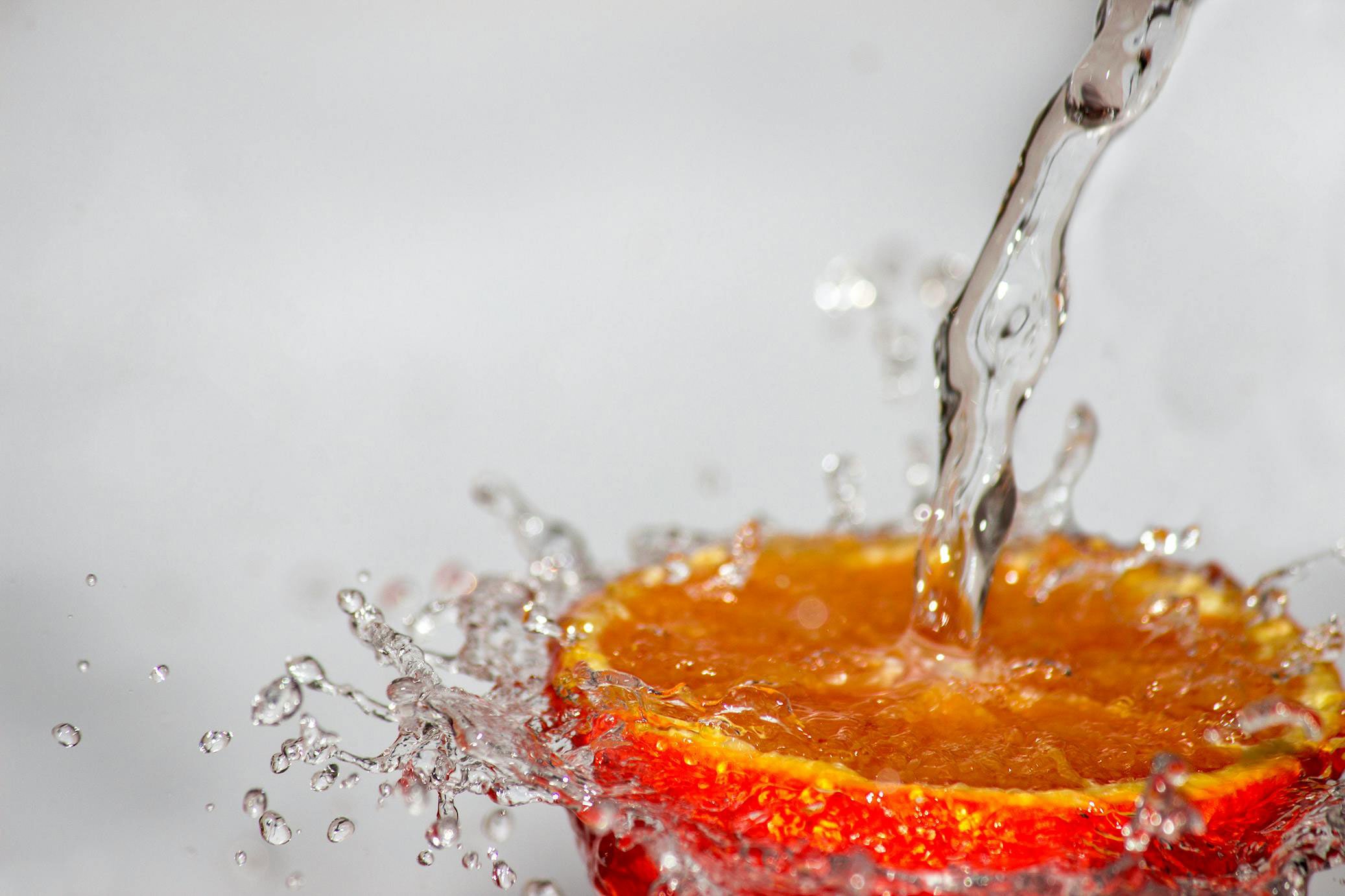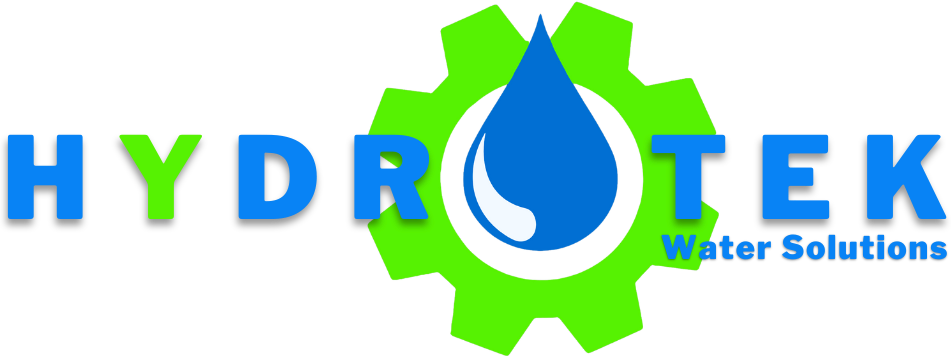
We care for your water, We care for your family
Contact us with any question:
602-666-1614
Hydrotek Water Solutions FAQs
-
Hard water contains high levels of minerals like calcium and magnesium. While not dangerous, these minerals can cause scale buildup in pipes and appliances, shortening their lifespan and leading to expensive repairs.
-
Although hard water typically doesn’t pose significant health risks, it can aggravate certain skin and hair conditions. For instance, the minerals in hard water can irritate skin, making conditions like eczema and acne worse by clogging pores or causing dryness. For hair, the mineral buildup can strip natural oils, leaving hair feeling rough and dry, which can lead to breakage, split ends, and even hair thinning or loss over time.
-
If your water comes from a public or municipal system, it is regularly tested for contaminants regulated by federal standards, such as microbial pathogens, radioactive elements, and toxic chemicals. However, these tests are typically conducted at the source, meaning the water quality tested by utilities doesn't necessarily reflect what reaches your home. Over time, pipes deteriorate, and water treatment or distribution systems can be compromised, leading to issues like boil water alerts.
To address delivery concerns, municipalities often treat water with chlorine to kill bacteria, meeting federal standards. While chlorine is effective in eliminating harmful microorganisms such as those causing typhoid, cholera, and dysentery, it also neutralizes color and odor. However, chlorine's byproducts have raised health concerns, and research on their potential risks is ongoing, allowing you to assess the level of comfort you have with these substances.
-
Hard water is created by the presence of minerals like calcium and magnesium. A water softener works through ion exchange, where hard water flows through a tank containing resin beads charged with sodium and potassium ions. These beads attract and bind to the calcium and magnesium ions, resulting in softer water being delivered to every faucet in your home.
-
If you're dealing with issues like dry skin and hair, limescale buildup around faucets and showerheads, or damage to your water appliances, a water softener can help improve your home. It can also extend the lifespan of your pipes and appliances, reduce soap scum and detergent usage, enhance the effectiveness of cleaning, and leave your clothes feeling softer after washing.
-
The immediate benefit of soft water is better water quality, but it also helps reduce costs. You'll use less soap for dishes and laundry, lower your energy bills since soft water heats more efficiently, and protect your appliances. By preventing scale buildup, soft water ensures that everything from your water heater to your coffee maker operates more efficiently and lasts longer.
-
The installation process involves linking the filtration system to your home's main water supply line, typically at the point where the water enters your home. This ensures that all water flowing through your pipes is softened. For optimal performance and to avoid potential issues, professional installation is recommended. Our Hydrotek Water Solutions team will coordinate with you to find a convenient time for the installation. They provide a hassle-free, white-glove service, carefully installing the system and testing everything to ensure it works properly. Once the installation is complete, they'll walk you through the system, answer any questions, and will conduct a 2nd water test to ensure your water is softened.
-
Common types of salt used in water softeners include rock salt, solar salt, and evaporated salt pellets. Each type has different purity levels and solubility rates. It’s best to use high-purity salt specifically designed for water softeners to prevent buildup and maintain efficiency.
-
Regeneration refers to the action of water softeners "recharging" resin beads after they have become "full" of calcium and magnesium and have lost their ability to soften water. There are a number of ways a regeneration cycle can be "triggered."
* Clock regeneration occurs when the regeneration cycle is activated after a certain amount of time has passed.
*Metered regeneration occurs when the regeneration cycle is triggered after a set amount of water has been used.
-
Rust in water is primarily caused by the presence of iron, which can appear in five distinct forms. The most common are particle iron and clear water iron. Particle iron appears as reddish-brown particles that can stain sinks, tubs, laundry, and even hair, while clear water iron is dissolved in the water and can leave similar stains once exposed to air. The other forms—iron bacteria, colloidal iron, and organic iron—can create more complex issues. Iron bacteria produce a slimy buildup and contribute to a foul odor, often described as sulfuric or rotten egg-like. Colloidal iron creates a cloudy, tea-colored appearance in water, while organic iron can cause stains that are harder to remove. A specialized iron water filter is the most effective solution for removing iron from your water, preventing staining and improving water quality.
-
The Water Quality Association defines hard water as water that has a concentration of dissolved minerals above 1 GPG (grains per gallon). Levels of hardness are described as follows:
Soft Water: Less than 1 GPG
Slightly Hard Water: Between 1 and 3.5 GPG
Moderately Hard Water: Between 3.5 and 7 GPG
Hard Water: Between 7 and 10.5 GPG
Very Hard Water: More than 10.5 GPG
An ion exchange water softener is the most common method for treating hard water.
-
OUR WATE SOFTENER REQUIRES A 40 POUND BAG OF SALT EVERY 4 TO 6 WEEKS, DEPENDING ON WATER HARDNESS AND WATER CONSUMPTION.
-
The US has been chlorinating its water supplies for over one hundred years. It is through this treatment method that we have been able to virtually wipe out water-borne diseases such as cholera and typhoid fever. When chlorine breaks down organic material, it creates byproducts that can damage the heart, kidneys, nervous system and lungs. These byproducts also increase the incidents of certain types of cancer. Many articles have been written about THM’s (trihalomethanes) and their impact on our health. This is well worth your investigation. Data showing these results prompted the Environmental Protection Agency in the United States to respond with limits to the amount of chlorine byproducts permissible in drinking water. Eliminating the byproducts of chlorine should be a primary objective in any personal water treatment plan.
-
Drinking water generally carries lead from plumbing that has been connected with lead solder (outlawed in 1986) or from outdated water distribution lines. There are a number of things you can do to reduce the risk of lead in your drinking water. Some sources suggest running your tap water for a couple of minutes before filling a glass to flush any accumulated lead from the water line (lead dissolves into standing water over time). However, this is not a foolproof solution, as there is no way of knowing whether all of the lead has been removed and since lead can still dissolve into running water.
Never use hot tap water to prepare drinks or meals as hot water attracts more lead than cold water does. Use a carbon drinking water filter or reverse osmosis system that has been certified to protect your drinking water from lead. Check that the manufacturer's claims have been verified by the Water Quality Association or NSF International; not all systems are certified for lead reduction.
-
IteA Reverse Osmosis (RO) system is a water filtration technology that uses a semi-permeable membrane to remove contaminants from water. The process of reverse osmosis essentially works by forcing water through the membrane, which allows only water molecules to pass while blocking most impurities, such as salts, minerals, bacteria, viruses, chemicals, and other harmful substances.m description
-
Water Pressure: Water is pushed through the system by pressure, either from your home's water supply or a pump (depending on the system setup).
Pre-Filtration: Before the water reaches the RO membrane, it often passes through one or more pre-filters (such as a sediment filter and a carbon filter). These pre-filters remove larger particles like sand, dirt, chlorine, and other chemicals that could damage the RO membrane or affect its efficiency.
RO Membrane: The water then passes through the heart of the system—the semi-permeable membrane. This membrane has very tiny pores (about 0.0001 microns in diameter), which allow only pure water molecules to pass through while rejecting contaminants like dissolved salts, heavy metals (lead, mercury), fluoride, chlorine, pesticides, and microorganisms.
Post-Filtration: After passing through the RO membrane, the water may undergo further filtration, typically with a post-carbon filter, which polishes the water, removing any remaining tastes or odors.
Pure Water Collection: The clean, purified water is then collected in a storage tank or directly dispensed, ready for use.
Wastewater: Along with the purified water, some contaminants (along with a small portion of water) are flushed out as wastewater, which is directed down the drain.
-
Improved Water Quality: RO provides high-quality, purified drinking water free from contaminants that may be present in municipal or well water.
Better Taste and Odor: By removing chlorine, chloramine, and other chemicals, RO systems improve the taste and smell of the water.
Health Protection: RO can eliminate harmful contaminants like lead, mercury, fluoride, pesticides, bacteria, and viruses that can be harmful to health, particularly over time.
Cost-Effective and Eco-Friendly: While buying bottled water can be expensive and environmentally harmful, an RO system provides a sustainable and cost-effective solution. You’ll always have access to purified water right from your tap, reducing the need for plastic bottles.
Low Maintenance: While the RO membrane and filters need to be replaced periodically, the system itself is relatively low-maintenance compared to other water purification methods
-
Any time that water is being taken from the RO system, the system will turn on to replenish the water that is taken from the storage tank. This is why your system makes that noise after you use RO water.
-
Perfluorooctanoic acid or PFOA and perfluorooctanesulfonic acid or PFOS are PFAS that were widely used in the manufacturing of many consumer products and industrial goods. Both PFOA and PFOS are now considered contaminants of concern by the US EPA. In fact, on June 15, 2022 the EPA updated their health advisory for PFOA and PFOS in water stating that negative health effects may occur when PFOS and PFOA are detected in water at concentration levels near zero.
https://www.epa.gov/sdwa/past-pfoa-and-pfos-health-effects-science-documents
-
At this time, there is not enough information about the impact of PFAS on our health. PFAS research is too new to make judgments about the health effects linked to exposure; however, the CDC has conducted research into PFAS and PFOA. The CDC’s research includes a study that tested humans to see what percentage had been exposed to the chemicals. Their conclusion was that the majority of people tested had at least some exposure to the chemicals, meaning exposure is widespread in the United States.
According to the CDC, prolonged exposure to PFOA and PFOS can have adverse health effects like:
Growth and development challenges
Reproduction difficulties
Liver damage
Since PFAS are considered emerging contaminants, there is currently no regulation of the chemicals in water supplies. The EPA has released a health advisory to address them, but a health advisory is not a regulation and cannot be enforced. This means municipal water suppliers are not required to meet any standards.
If you live in an area where a public health advisory has been issued, you should learn more about how to protect yourself from prolonged exposure to PFAS. If you are not sure if your community is affected, the Environment Working Group provides maps and information about potentially affected areas.
RESOURCE: https://www.ewg.org/areas-focus/toxic-chemicals/pfas-chemicals
-
In most cases, contaminated water is found where PFAS chemicals like PFOA and PFOS were manufactured, or where they were used to produce industrial or consumer products. In some cases, high levels of the chemicals have been detected in water where firefighting foams were heavily used. This includes locations like firefighter training facilities, military bases and oil production plants.
PFOS and PFOA can affect both groundwater and surface water supplies where the contaminants have taken hold in the environment. Groundwater that is affected by PFOA or PFOS is often polluted by soil and air contamination. Surface water can be affected when the chemicals used in manufacturing facilities enter directly into a water source. Water supplies can also be contaminated by wastewater from washing pots, pans, utensils and fabrics made using PFOS and PFOA chemicals.
According to the Environmental Protection Agency (EPA), PFAS do not break down and can accumulate over time. With the permanence of PFOS and PFOA chemicals, removing them from a water supply at scale is tough and a real concern. The good news is there are water treatment technologies that can reduce the levels of PFAS in your drinking water.
-
To remove PFAS from the water in your home the best approach is to install an in-home water treatment system. There are three water treatment technologies that the EPA says are effective at reducing PFAS in drinking water - reverse osmosis, activated carbon filtration and ion exchange. Both the Hydro Ngen 45C and Hydro RO Alka Drinking Water System POU Filtration System are able to reduce PFAS and PFOA in water.

